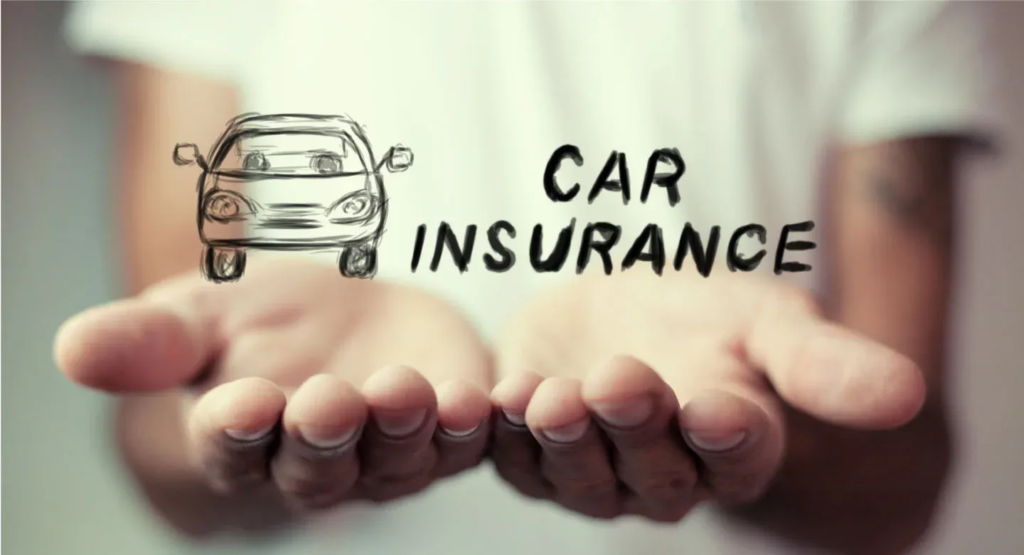Car Insurance : Everything You Need To Know Before Buying
Buying car insurance is an essential step in protecting yourself, your vehicle, and others on the road. With a wide range of policy options, coverage limits, and premium rates available, selecting the right car insurance can be overwhelming. This guide provides a comprehensive overview of car insurance, helping you make an informed decision that suits your needs and budget.
Understanding Car Insurance

Car insurance is a contract between you and an insurance company that provides financial protection against losses resulting from accidents, theft, and other unforeseen events. In exchange for regular premium payments, the insurer agrees to cover the costs outlined in your policy.
Types of Car Insurance Coverage
1. Liability Coverage
Liability coverage is mandatory in most states and protects you if you cause an accident that injures others or damages their property. It typically includes:
- Bodily Injury Liability (BIL): Covers medical expenses, lost wages, and legal fees if you’re responsible for injuries to others.
- Property Damage Liability (PDL): Pays for repairs to the other party’s vehicle or property if you’re at fault.
2. Collision Coverage
Collision coverage pays for damage to your vehicle resulting from a collision with another car or object, regardless of fault. This coverage is especially valuable for newer or expensive vehicles.
3. Comprehensive Coverage
Comprehensive coverage protects against non-collision-related damages, such as:
- Theft
- Vandalism
- Natural disasters (floods, earthquakes, storms)
- Falling objects
- Animal collisions
4. Uninsured/Underinsured Motorist Coverage (UM/UIM)
This coverage protects you if you’re hit by a driver who has no insurance or insufficient coverage to pay for damages. It also covers hit-and-run incidents.
5. Personal Injury Protection (PIP) / Medical Payments (MedPay)
- PIP: Covers medical expenses, lost wages, and other related costs for you and your passengers, regardless of fault.
- MedPay: Covers medical expenses but usually does not include lost wages or other related costs.
6. Gap Insurance
Gap insurance covers the difference between what you owe on your vehicle loan and the car’s actual cash value if it’s totaled or stolen.
7. Rental Reimbursement Coverage
Pays for a rental car while your vehicle is being repaired after a covered accident.
8. Roadside Assistance
Covers services like towing, battery jump-starts, flat tire changes, and lockout assistance.
Factors to Consider When Choosing Car Insurance
1. State Minimum Coverage Requirements
Each state mandates a minimum level of car insurance coverage. Be sure to meet your state’s legal requirements, but consider purchasing additional coverage for better protection.
2. Assess Your Coverage Needs
Evaluate the value of your vehicle, your driving habits, and your financial situation to determine the right level of coverage. If you have a new or financed vehicle, comprehensive and collision coverage may be necessary.
3. Deductible Amount
A deductible is the amount you pay out of pocket before your insurance coverage kicks in. Higher deductibles typically result in lower premiums, but you’ll need to cover more costs in the event of a claim.
4. Actual Cash Value vs. Replacement Cost
- Actual Cash Value (ACV): Pays the current market value of your vehicle, factoring in depreciation.
- Replacement Cost: Pays the cost of replacing your vehicle with a similar model without considering depreciation.
5. Consider Your Driving Record
Your driving history affects your premium. Drivers with a clean record may qualify for lower rates, while accidents, traffic violations, or DUIs can result in higher premiums.
6. Check for Discounts
Many insurers offer discounts for:
- Safe driving history
- Bundling home and auto policies
- Installing anti-theft devices
- Good student discounts
- Low annual mileage
7. Compare Premium Rates
Obtain quotes from multiple insurance providers to compare prices and coverage options. Look beyond the premium cost and assess the overall value of the policy.
8. Evaluate the Insurer’s Reputation
Check customer reviews, claim handling, and the financial stability of the insurance company. Look for ratings from organizations like AM Best, J.D. Power, and the Better Business Bureau.
9. Consider Policy Add-ons and Endorsements
Review additional policy options that enhance your coverage, such as accident forgiveness, rental car reimbursement, and roadside assistance.
Common Types of Car Insurance Policies

1. Liability-Only Policy
Covers bodily injury and property damage liability but does not protect your vehicle. Ideal for older cars with lower value.
2. Full Coverage Policy
Includes liability, collision, and comprehensive coverage. Suitable for new or financed vehicles.
3. Non-Owner Car Insurance
Provides liability coverage for individuals who drive but do not own a vehicle.
4. Usage-Based Insurance (UBI)
UBI calculates your premium based on driving habits using telematics technology. Safe drivers can benefit from lower rates.
Steps to Buy the Right Car Insurance Policy
1. Evaluate Your Coverage Needs
Consider your vehicle’s value, driving habits, and financial situation to determine the appropriate coverage.
2. Research and Compare Providers
Obtain quotes from multiple insurers to compare premiums, coverage options, and customer satisfaction.
3. Understand Policy Terms and Conditions
Review policy terms, exclusions, and limits carefully. Clarify any uncertainties with the insurer.
4. Determine Your Deductible
Choose a deductible amount that balances affordable premiums with manageable out-of-pocket costs.
5. Check for Available Discounts
Ask about available discounts to reduce your premium without sacrificing coverage.
6. Review Customer Service and Claims Process
Choose an insurer with a reputation for prompt and efficient claims processing.
How to Save Money on Car Insurance
1. Bundle Policies
Combine auto and home insurance to receive multi-policy discounts.
2. Increase Your Deductible
Opting for a higher deductible reduces your monthly premium but increases your out-of-pocket expenses in case of a claim.
3. Maintain a Clean Driving Record
Avoid accidents and traffic violations to qualify for safe driver discounts.
4. Drive Less and Use Telematics
Lower mileage and safe driving habits can lead to lower premiums through usage-based insurance programs.
5. Take Defensive Driving Courses
Completing a defensive driving course can qualify you for a discount with many insurers.
6. Pay Annually Instead of Monthly
Paying your premium in full annually may result in a discount compared to monthly payments.
Common Mistakes to Avoid When Buying Car Insurance

1. Opting for Minimum Coverage Only
While it may lower your premium, minimum coverage may not provide adequate protection in the event of a major accident.
2. Not Comparing Multiple Quotes
Failing to shop around may result in higher premiums or insufficient coverage.
3. Ignoring Policy Exclusions
Understand what is excluded from your policy to avoid surprises when filing a claim.
4. Underestimating Coverage Needs
Choosing lower limits can leave you vulnerable to paying out-of-pocket for significant damages.
5. Failing to Update Your Policy
Notify your insurer of any life changes, such as moving, buying a new car, or adding a driver, to ensure adequate coverage.
Also Read: Pet Insurance And Preventive Care: Keeping Pets Healthy
Conclusion
Choosing the best car insurance requires careful consideration of your coverage needs, budget, and driving habits. Understanding different types of coverage, comparing quotes, and reviewing the reputation of insurance providers can help you make an informed decision. By staying informed and regularly reviewing your policy, you can protect yourself, your passengers, and your vehicle while ensuring financial security on the road.
Frequently Asked Questions (FAQs)
1. What is the minimum car insurance required by law?
Minimum requirements vary by state but typically include liability coverage for bodily injury and property damage.
2. Can I drive without car insurance?
Driving without insurance is illegal in most states and can result in fines, license suspension, and legal consequences.
3. How can I lower my car insurance premium?
You can reduce your premium by bundling policies, maintaining a clean driving record, increasing your deductible, and qualifying for discounts.
4. Does car insurance cover rental cars?
Many policies extend coverage to rental cars, but it’s best to confirm with your insurer before renting a vehicle.
5. What happens if I let my car insurance lapse?
A lapse in coverage can lead to higher premiums, legal penalties, and financial risk if an accident occurs during the lapse.
